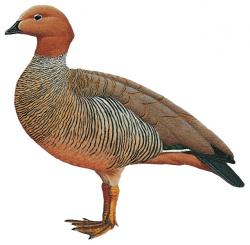In the early 20th century, tens of thousands of Ruddy-headed Geese crowded the deserts of Patagonia. Today, they have become a rare sight. However, they still inhabit the Falkland Islands (Malvinas) in large numbers and some argue that these island-dwellers could be the key to one day repopulating the continental. However, in a blow for the future of this species, a new study reveals reintroduction might not be possible. Feeding on stems and leaves in the grasslands, their proximity to agricultural lands landed them into trouble in the 1930s, when the Argentinian government assumed they competed with sheep and cattle stocks for grassland resources. As a result, they were considered a pest, and intense persecution resulted in steep declines in the mainland population. In the meantime, the non-migrant population inhabiting the Falkland Islands (Malvinas) was also being removed – but unlike their migrant continental equivalents, they were able to recover. According to a new study supported by Aves Argentinas (BirdLife Partner), the Ruddy-headed Goose (Chloephaga rubidiceps) has gone from being described as the most abundant goose in the Patagonian steppe to having a population of around 800 individuals, a 90% decrease since the early 20th century. The continental populations face now an uncertain future as the species struggles to make a comeback because their reproductive activity has diminished significantly. Their first successful nesting in Argentinean part of Tierra del Fuego was recorded just last year, after a period of 20 years with no recorded egg-laying.
Source: Birdlife, 22 November 2016
http://www.birdlife.org/americas/news/new-study-reveals-alarming-declin…

- Login om te reageren
